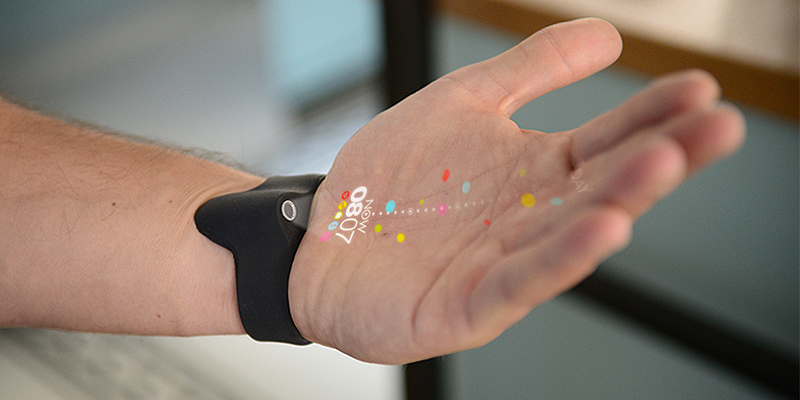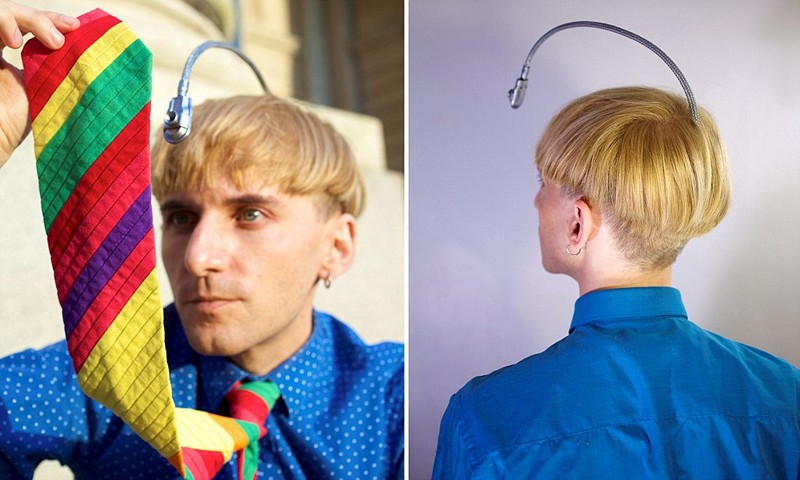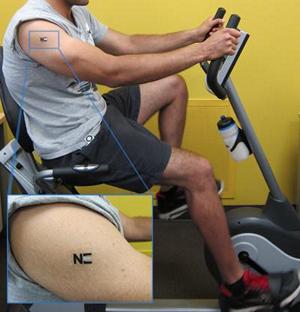Sources of energy for the gadgets of the future

Gadgets are inexorably becoming smaller in size, despite the obvious anatomical limitations of a person. And gradually, everything becomes “wearable”, getting closer to the body. Vivid examples are fitness trackers who took the place of wristwatches that were driven out of use by the mass distribution of mobile phones. Now the clock, having regrouped and received reinforcements, went on the offensive in the form of “smart” ones. Glasses, which also went underground thanks to contact lenses, may soon catch up after the clock.
Naturally, this is not the limit. In the near future, we expect the emergence of even more compact gadgets. Perhaps they will even use the human body . And the more acute should be the problem of power gadgets. On the one hand, the grinding of the element base may entail a reduction in energy consumption. On the other hand, the batteries will also have to be reduced in size in order to somehow maintain the compactness and elegance of the products. And everything will become even more complicated if the human body is used as an active component of the gadget itself. Therefore, now is the time to pay attention to alternative ways of power supply, which can be a good help now.
')
In particular, let us consider the use of the heat of the human body, sweat and channeled light.
The usual nightly charging of gadgets can be inconvenient for some wearable gadgets. And in some cases, for example, implanted devices - even impossible. At one time, the experience of Neil Harbisson (Neil Harbisson), who in 2004 during an underground operation was implanted in the head with a device on a 30-cm bracket, allowing to distinguish colors, received wide publicity. The fact is that Neil suffers from rare genetic disorders resulting in a lack of color vision. Of course, he suddenly did not find the ability to distinguish colors. In short, the camera image is transformed into sounds of different frequencies depending on the recorded colors. And Harbisson is guided in the multicolor world on these sounds transmitted by the implant .

In 2013, Harbisson upgraded by adding a Bluetooth module, which allowed him to download images from a mobile phone that other people send him. Harbisson also became the first person to be officially recognized as a cyborg - the British passport service set a precedent. But also by his example, he demonstrated the features of the “exploitation” of implanted gadgets.
There is no doubt that sooner or later the use of wearable electronics will become, if not a trend, then a completely commonplace phenomenon. The reason is simple - it is very convenient. It is much easier to fasten, glue, implant or even tattoo one or another gadget. For example, an implanted phone can never be forgotten, lost, dropped into the water, accidentally sit on it and crush.
Wearable gadgets that use a variety of ways of “installation” have already become firmly established on the market: bracelets, stickers, clips, pendants, implanted sensors and “smart” clothes, including woven and wired electronic components. Perhaps all possible methods have already been tried.

And the main problem wearable gadgets already (or too) is the power supply. It does not help even increase energy efficiency. In the case of traditional smartphones, tablets and other devices, we simply need to charge them at night, but this is not always convenient for owners of wearable gadgets. And what about the implanted devices? Cut alive and change batteries?
Of course, scientists continue to work on reducing the power consumption of gadgets. For example, this chip looks very promising and can radically improve the situation. And if this development is successful, even energy from the “environment” will be enough for a long supply of devices. Perhaps at first, it will be used in addition to the main battery.
Getting energy from the outside
All potential external sources of energy for gadgets can be divided into five types: photoelectric (light), thermoelectric (heat), piezoelectric (mechanical pressure / compression), electrodynamic (vibration / movement) and biological (organic chemistry, for example, using fat or sweat). Over the past 2-3 years, dozens of studies have been carried out, by which one can judge the progress in all five categories. But almost all successes remain confined to the walls of the laboratories, with the exception of a few exceptions, like “ biometric headphones .”
In addition to the scientific and technical difficulties of using external energy sources, there is an important factor in the psychological unreadiness of consumers. Devices that “feed on” the warmth of our body or other types of energy will become more acceptable for people only after some time, when wearable gadgets will become familiar, like modern smartphones. The first generations of wearable gadgets will still use traditional rechargeable batteries, but within a few years, consumers will be ready for the “next step.”
alternative energy
But still this is not the key point. The main driving force behind the introduction of alternative energy sources are scientific and technical successes. The most promising directions today are:
• Transformation of human heat into electricity using fiberglass . A laboratory sample of a flexible glass cloth thermoelectric generator with a thickness of about 500 microns and a density of about 0.13 g / cm2 has already been developed. The minimum bending radius is 20 mm, and the generator performance does not change during 120 bending cycles.

• Channeling light using photovoltaic organic cells woven into fabric. They are flexible and soft areas on fabric up to 5 cm2. To date, their efficiency is about 1.79%; in the bright sun, the density of the produced current reaches 13.11 mA / cm2.

• The conversion of lactate from human sweat into electricity using a "biotattoo". This is not a classic tattoo, but a temporary covering of a substance in which the production of electricity occurs during a chemical reaction. Now scientists have achieved production of about 4 microwatts with a skin contact area of 6 mm2. With the use of larger “tattoos”, it was possible to reach 70 microwatts.

• The use of radio-magnetic fields for wirelessly feeding biometric implants and “self-propelled” devices for targeted drug delivery.
Probably in the next few years we will be able to see the first commercial devices using the above described alternative power sources. Of course, if we talk about medical devices, first of all, new technologies will be used for non-critical purposes, certainly not for pacemakers.
Surely the effectiveness of the first alternative power systems will be low. It is possible that 90% of the time they will accumulate energy, making a small contribution to the total power supply of devices. But one day the situation will change, and we will carry batteries and rechargeable batteries just as safety net. And gadgets will work fine without them.
Oh brave new world.
Suppose that in the next six months or a year it will be possible to drastically increase the efficiency of the described technologies. Which of them could be applied in modern devices, for example, new generations of YotaPhone? The most obvious are thermo and photoelectric.
Integration of external heat-absorbing elements into the body of the smartphone would significantly extend the operation of the device. And it is not necessary to keep it in your hands all the time, there is enough pocket, just to be closer to the body. In addition, a completely different meaning would take on the phenomenon of heating the gadget under heavy load. Instead of useless heat removal to the outside one could use it to power the device itself with electricity. Pure recovery.
In the case of photovoltaic technology, the advantage would be those who often use the smartphone in a sufficiently bright light. Although it does not add comfort when working with traditional LCD displays, but it is beneficial when working with EPD, electronic ink. It would be logical to place the light-absorbing elements on the ends of the device. As an alternative solution, you can think of quick-detachable photoelectric cases for smartphones that generate energy in the light and immediately charge their contents in an induction way.
And what are the ways to implement alternative power technologies for smartphones come to your mind?
Source: https://habr.com/ru/post/237049/
All Articles